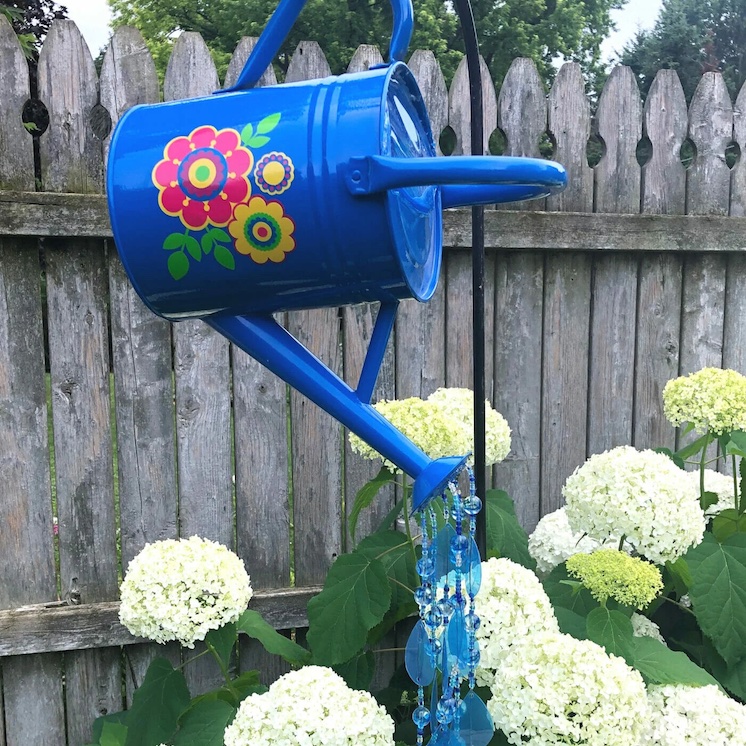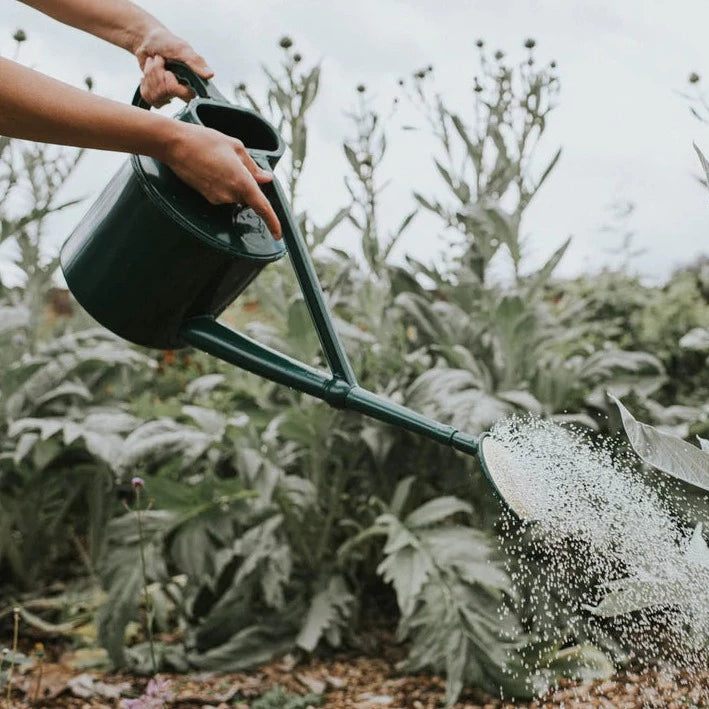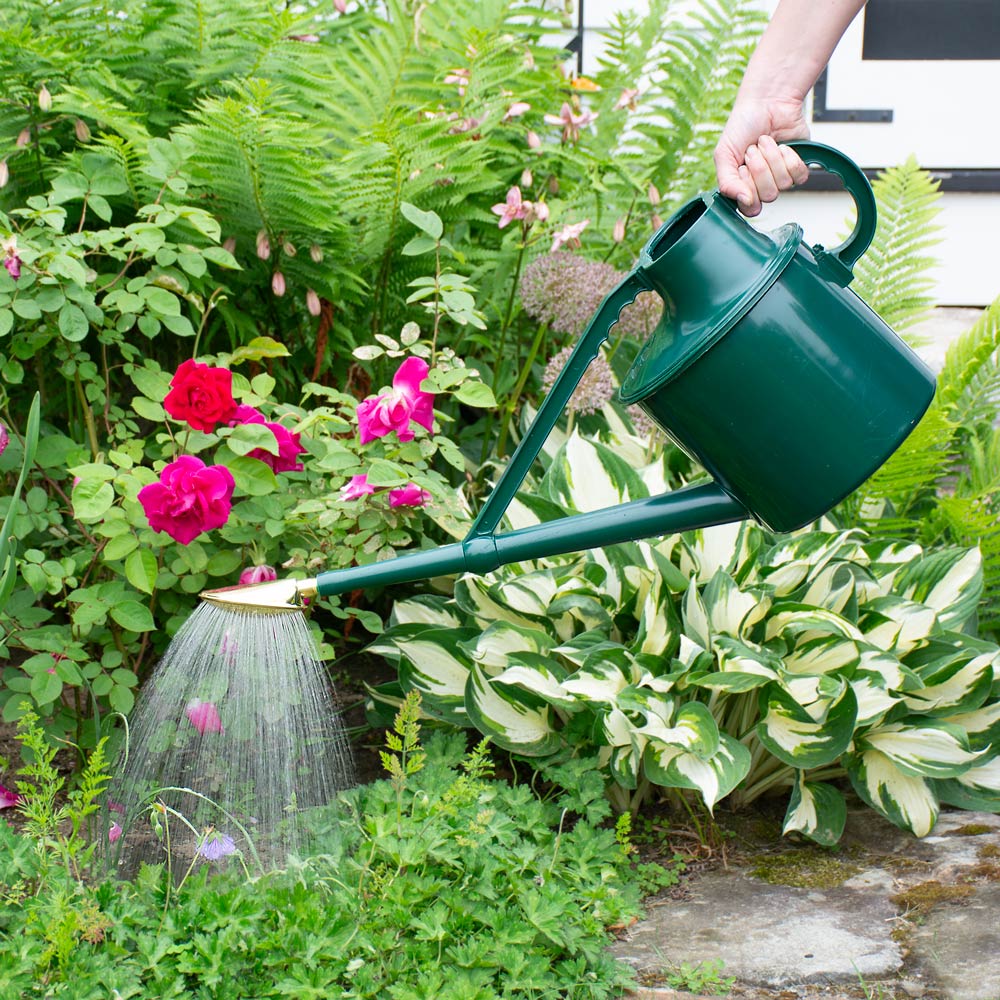The Importance of Proper Watering in Gardening
Proper watering forms the backbone of any garden’s health. It’s not just about the amount of water you provide, but also the frequency and method of watering that can determine your garden’s growth and vitality. Ensuring plants receive the right amount of moisture is crucial. Too little water, and plants fail to thrive; too much, and you risk disease or root rot. Using an outdoor watering can, gardeners can control the distribution and steadiness of the water flow, leading to more efficient hydration.
Water plays a critical role in the process of photosynthesis and helps maintain the firmness of plants by keeping cells turgid. An outdoor watering can with a long spout can help you target the roots rather than the leaves, which is where plants generally absorb moisture from. Additionally, accurate watering can prevent soil erosion and the leaching away of important nutrients.
Gardening success involves understanding the unique watering requirements of your plants. A watering can that’s suited for outdoor use typically comes with features that cater to different needs – like detachable sprinkler heads for gentle watering of delicate plants or a large capacity to cover more area without the need for frequent refills. By adhering to proper watering practices, gardeners can bolster plant defenses against pests, achieve a lush green appearance, and enhance flower and fruit production. Thus, the right watering approach with the correct outdoor watering can can make a significant difference in cultivating a flourishing outdoor space.
Choosing the Right Watering Can for Outdoor Use
When selecting a watering can outdoor, consider several key factors. Size, material, and design are crucial. First, think about your garden’s size. A bigger can means fewer trips to the tap for large gardens. For small patios or indoor plants, a smaller can will do.
Material matters for durability. Plastic cans are lightweight and affordable. Metal cans, like galvanized steel, last longer and resist rust. Consider the weight when full, especially for large gardens.
Look for an ergonomic design. A comfortable handle and an easy-to-tilt spout make watering less of a strain. Choose a can with a detachable spout for tight spaces or broad distribution.
A can with measurement markings helps you apply the right water amount. A balanced can, with a fill hole on top, prevents water from spilling while carrying it.
Check the rose (sprinkler head). It should come off for cleaning and have different patterns for various plants’ needs. A rose with fine holes suits seedlings and delicate flowers. A more open pattern works well for sturdy plants.
In summary, pick a watering can outdoor that suits your garden’s size, is made from durable materials, has an ergonomic design, and features a versatile rose. This will help ensure efficient, comfortable, and precise watering for your plants.
Understanding Watering Needs of Different Plants
Every plant has unique watering needs. It’s crucial to tailor your watering routine to match these requirements to ensure your plants thrive. Here’s how you can understand and cater to the diverse watering needs of different plants with a watering can outdoor:
- Observe the plant’s natural habitat. Plants native to arid regions may need less water than those from wetter areas.
- Consider the plant’s stage of growth. Seedlings and young plants often require more frequent watering than established ones.
- Check the soil moisture. Use your finger or a soil moisture meter before watering. If the top inch of soil is dry, it’s time to water.
- Note the weather conditions. Plants may need more water during hot, dry spells and less when it’s cool or rainy.
- Understand the signs of overwatering and underwatering. Yellow leaves can indicate too much water, while wilted or dry leaves may mean too little.
Using a well-chosen watering can outdoor helps control the amount and rate at which water is applied, making it easier to meet each plant’s watering needs. Remember, consistent and mindful watering is the key to a healthy and vibrant garden.
Innovative Watering Techniques for Gardens and Lawns
Innovative gardening strategies can enhance your outdoor space’s health and appearance. When it comes to watering with a watering can outdoor, numerous techniques can be employed for efficiency and plant well-being. Let’s uncover some of these methods:
- Pulse Watering. This technique involves several short bursts of water. It allows the soil to absorb moisture before adding more, reducing runoff.
- Soaker Hoses. Although not directly related to watering cans, soaker hoses complement them well. You can target specific areas with your can while the hose handles larger sections.
- Drought Tolerant Planting. Pair water-wise plants with strategic watering to save water and effort. Use your can to water only when necessary.
- Timing Your Watering. Early morning or late evening watering reduces evaporation. Your watering can outdoor can help apply the precise amount at the right time.
- Mulching. Though not a direct watering technique, mulch retains moisture. Water less frequently by combining a watering can outdoor with a good layer of mulch.
- Watering Under the Leaves. Aim the spout of your can near the base of plants. Watering the roots directly helps prevent leaf diseases.
Innovative watering involves not just these techniques but also being in tune with nature’s cues and your plants’ specific needs. With a reliable watering can outdoor, adapting to these methods is simple and can lead to a more vibrant and sustainable garden.
Maintaining Your Watering Can for Longevity
To ensure your watering can outdoor lasts for years, regular maintenance is key. Here are simple steps to keep your can in good condition:
- Clean Regularly. After each use, rinse your can to prevent dirt build-up. Remove the rose and wash it separately to avoid clogging.
- Empty Before Storing. Always empty excess water. This prevents rust in metal cans and stops algae growth in plastic ones.
- Inspect for Damage. Check your can for leaks or dents. Small issues can become big problems if ignored.
- Avoid Harsh Chemicals. Stick to water or mild soap for cleaning. Chemicals can damage the can’s material over time.
- Store Properly. Keep your can in a cool, dry place away from direct sunlight to prevent fading and warping.
- Replace Parts When Necessary. If a part breaks or wears down, replace it promptly to maintain functionality.
With care, your watering can outdoor will continue to make gardening efficient and enjoyable. Remember, a well-maintained can is also a step towards sustainable gardening, reducing the need for frequent replacements.
The Role of Water Conservation in Outdoor Watering
Conserving water is crucial for our planet’s health and to reduce utility bills. When using a watering can outdoor, gardeners must be mindful of their water usage. Here are ways to conserve water:
- Use rainwater. Collect natural rainwater in barrels and use it for your garden. It saves tap water and is better for plants as it lacks chlorine.
- Water at the right time. Water early in the morning or late evening to prevent quick evaporation. This means you’ll use less water over time.
- Choose plants wisely. Pick plants that need less water. This will reduce your garden’s overall water demand.
- Check for leaks. Ensure your watering can outdoor does not leak. A single drip can amount to a lot of wasted water over time.
- Water only what needs it. Don’t water paths or areas without plants. Focus on the root area where plants take up water.
- Educate others. Share tips on water conservation with your community. The more people conserve water, the greater the impact.
By applying these practices, gardeners can significantly lower their water consumption while maintaining healthy plants. Using a well-maintained watering can outdoor is a step toward achieving this balance. Water conservation with a good watering strategy makes for a sustainable garden and a happier environment.
Tips for Watering During Different Seasons
Gardening tasks vary with the seasons, and watering is no exception. To keep plants healthy year-round, apply season-specific watering techniques using your watering can outdoor. Here are tips for each season:
- Spring: As new growth emerges, plants need more moisture. Water more frequently but be mindful of spring rains to avoid overwatering.
- Summer: Heat increases evaporation; water deeply and less often. Early morning is the best time to prevent midday evaporation losses.
- Autumn: Gradually reduce watering as plants prepare for dormancy. Ensure soil stays moist but not wet, especially for perennials.
- Winter: Watering needs drop significantly. For regions with mild winters, water sparingly only if there’s a dry spell.
By adjusting your watering routine throughout the year, you maintain plant vitality and water efficiency. Use your watering can outdoor to give each plant the attention it needs, regardless of the season.
Common Mistakes to Avoid When Using Outdoor Watering Cans
While outdoor watering cans are simple tools, using them incorrectly can harm your plants. Avoid these common mistakes to ensure your garden stays healthy:
- Overwatering. Giving plants too much water can lead to root rot and disease. Stick to the guideline: water only when the top inch of soil feels dry.
- Underwatering. Equally damaging is giving too little water. Plants can wilt or die if they consistently receive less water than they need.
- Watering at midday. This can cause quick evaporation and even burn your plants. Water in the early morning or late evening instead.
- Focusing on leaves instead of roots. Always direct the water toward the base of the plant. Wet leaves are prone to fungal infections and other diseases.
- Using the wrong rose. Using a rose with holes too large can disturb the soil and harm delicate plants. Match the rose to the plant’s needs.
- Neglecting to clean the can. Dirt and debris in the can can clog the rose and introduce disease to your plants. Rinse your can after each use.
- Not repairing leaks. A leaking watering can wastes water and your time. Fix any leaks to ensure efficient use of water.
By avoiding these mistakes, you’ll make the most of your watering can outdoor and keep your garden flourishing.



